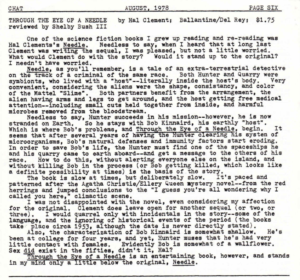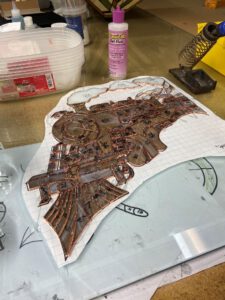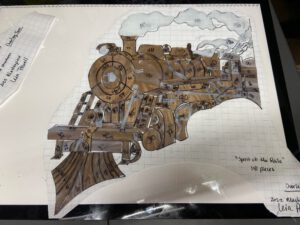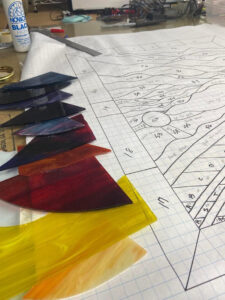By Master Stained Glass Artisan Leia Powell
Leia Powell, a 25-year veteran glazier and owner of Wildcat Mountain Artistry in Florence, Alabama, is creating her yearly masterpiece specifically for Chattacon 2023. Our Artist Guest of Honor conceived of “Spirit of the Rails”, a shadowy apparition haunting the rusty railroads of Chattanooga, as a multi-layered or “layover” piece where she takes four separate creations and binds them together to give the viewer a more in-depth experience.
The Tools of Glass Cutting
Cutting glass by hand requires a lot of upper body strength, a hip height table covered in a “Morton Grid”, but you can also get the grids they use in the ceilings of elevators, a variety of pliers and glass cutters, some oil, a bunch of bins to put scrap and finished cut pieces in, a cork-backed steel ruler, and really strong hands. No, really. Leia had physical therapy on the overworked muscles in her hands earlier this year, and they measure how many pounds you can grip. According to her therapist, a typical uninjured female can grip 25lb of pressure, Leia with overworked muscles, could grip 110lbs.
- Glass Cutter – A glass cutter is a device with a tungsten carbide wheel that is used to “score” or deeply scratch the glass. It is used with cutter oil to cut down on the shards flying everywhere, and to help the wheel glide over the glass.
- Running Pliers – Running pliers have a set of rubber covered tips that form a concave/convex curve. When lined up with a score line, they put reverse pressure on either side of the score to “run” the score or start and complete a controlled crack in the glass that eventually forms the shape of the piece you’re wanting to cut out.
- Grozier Pliers – Grozier pliers are flat on one side and have a serrated inside curve on the other side. They’re used to “nip” off unwanted pieces of glass or shards that may be left after you complete your score, or to break or “snap” off thin cuts on the edge of the glass when used perpendicular to the score line.
- Morton Grid – This piece of plastic forms a flat cutting surface, allowing shards and small pieces of glass to fall into the gridwork below, to keep from scratching the bottom of your glass as you score it, or break it in an unwanted fashion due to a pivot point under the glass that you may not be aware of when you score.
- Cork-backed Steel Ruler – This allows you to cut straight lines without your ruler slipping around on the surface of the glass.
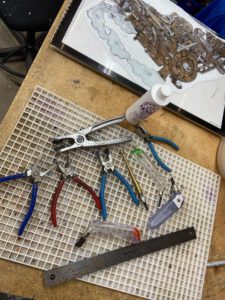
Cutting the Sky
Leia’s favorite part about this extremely challenging project is the colorful sky background. Accomplishing the appearance of a seamless gradient with a dozen different colors of glass is incredibly difficult, but not impossible, so naturally she wanted to do it. She knew when she mocked up the digital version of “Spirit of the Rails” that it would not be identical when she finally started digging through glass. It would be BETTER.
It took Leia four hours, color by color, to cut out the “Background” window of “Spirit of the Rails.” Here are a ton of WIP pictures and the result of her labor. She’s incredibly pleased with the panel, the gradient exactly what she wanted. The colors tie together so well, the streak of amber through the green she wanted to capture to illuminate the horizon cut perfectly. The texture of the glass she used for the rocky railroad really adds to its realism, even with the more transparent amber portion making it appear that the sun is shining on the tracks.
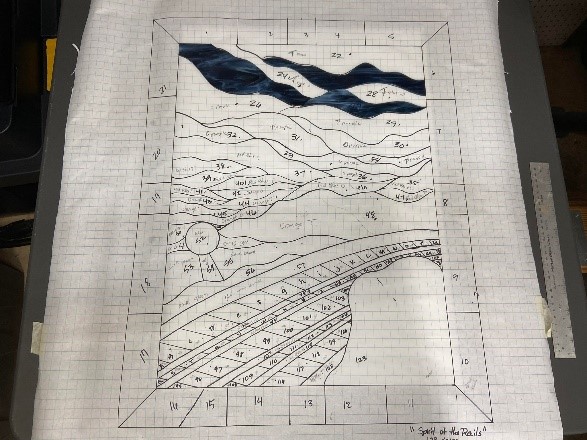
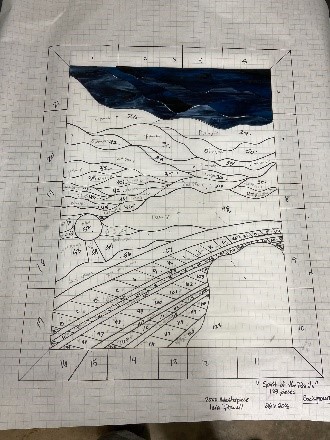

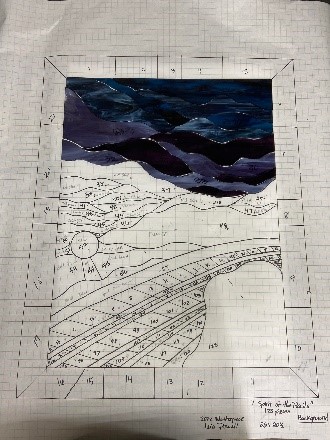
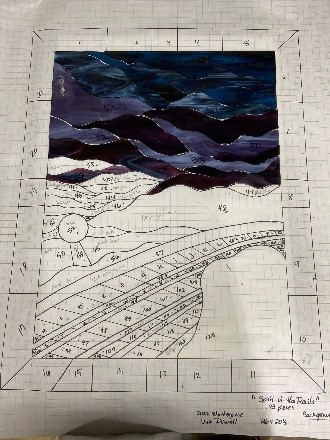
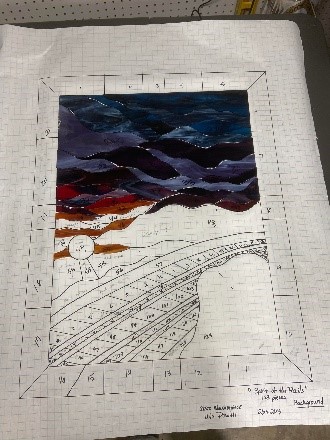
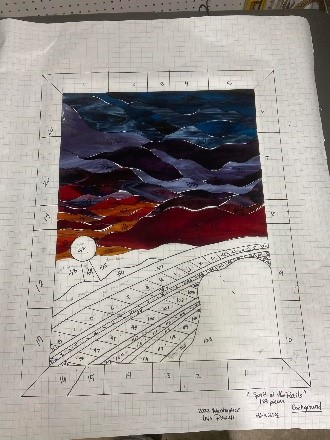
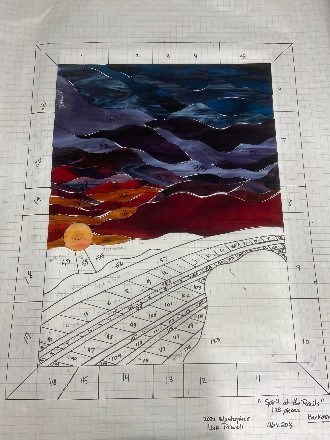


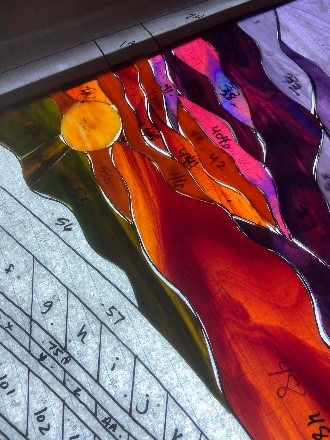

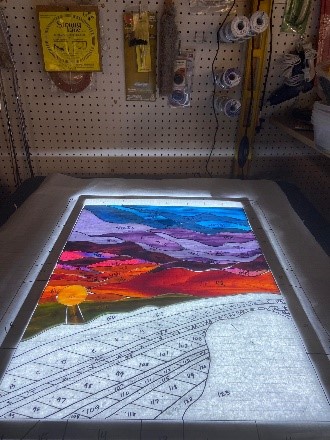
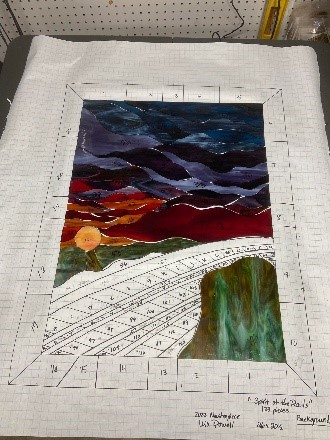

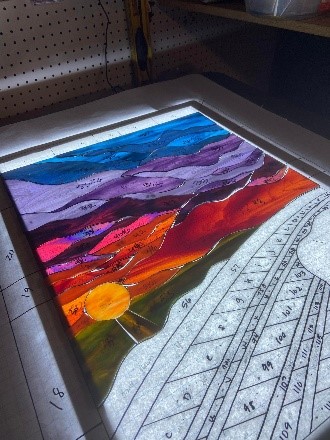
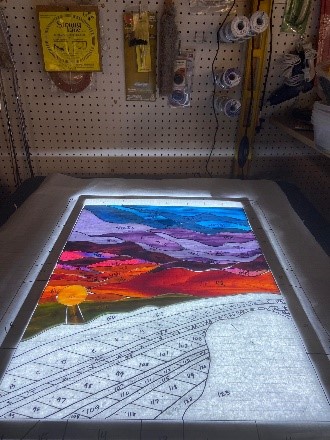
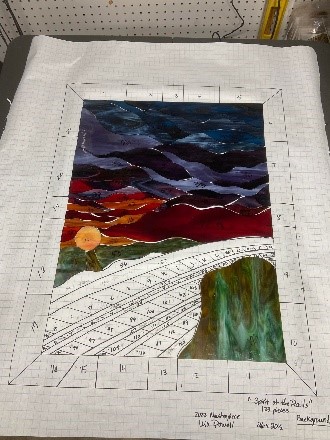
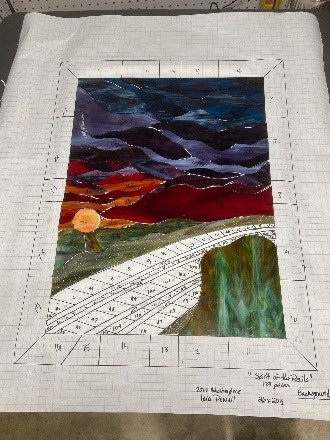
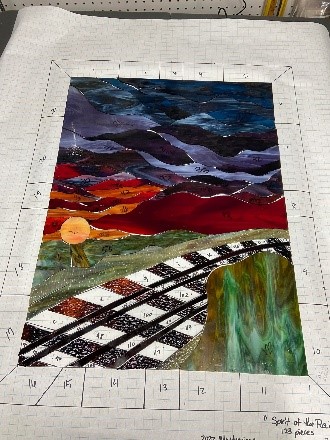
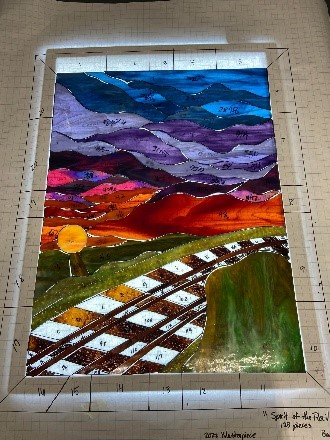
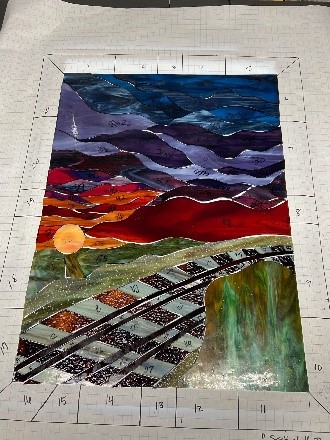
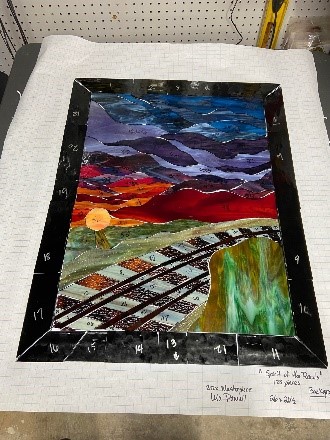
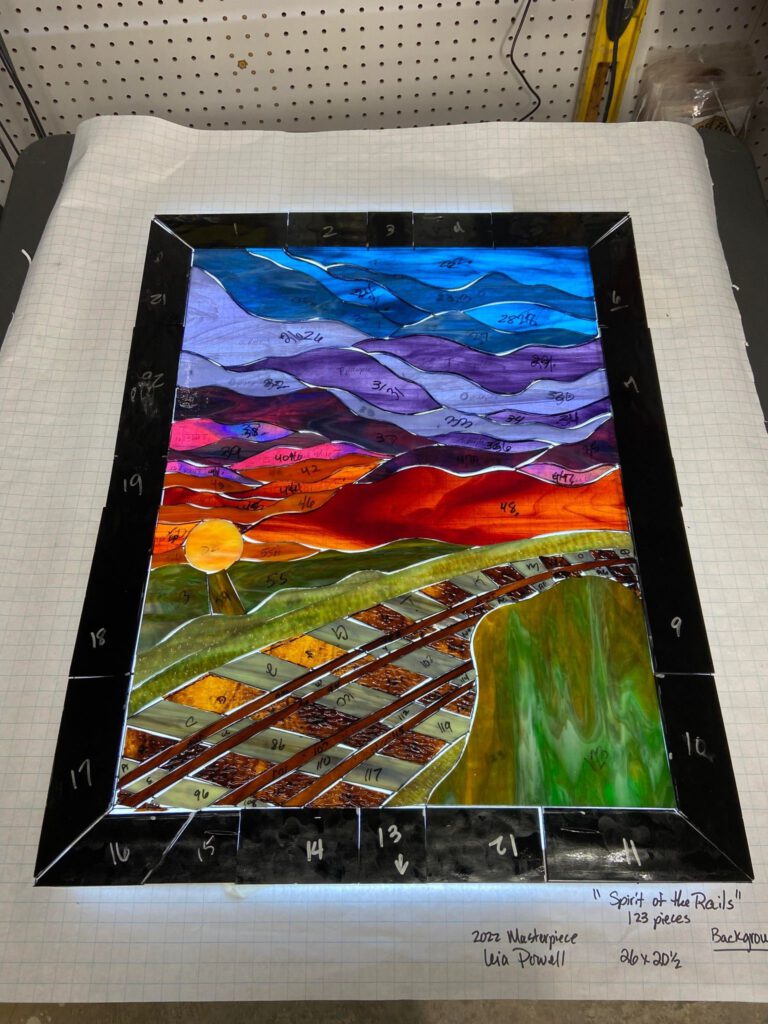
How about those colors, huh?
Stay Tuned for Part Five: Grinding and Copper Foiling!
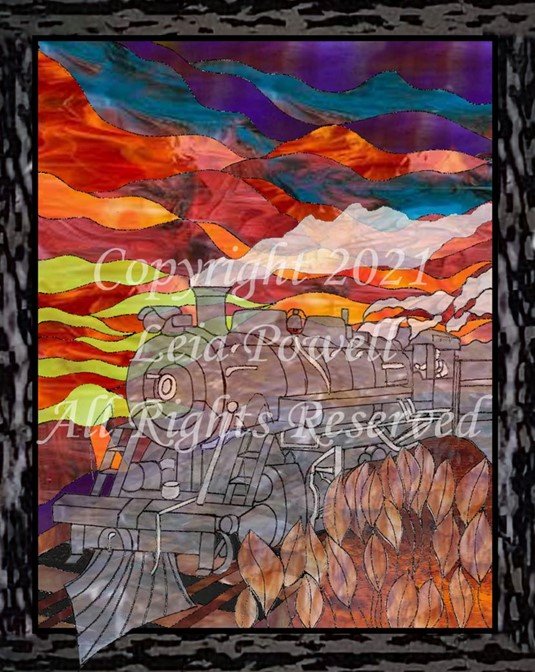
Master Stained Glass Artisan Leia Powell has been creating glass masterpieces, breaking down barriers, and rejuvenating the old world artistry for over 25 years. The first stained glass artist to be nominated for the coveted Chesley Award, Leia is also the first glass artist in history to be the sole maker of an author’s trademarked characters: Edgar Rice Burroughs.
Her three-dimensional figures and exceptionally intricate stained glass windows have won her multiple art show awards at both LibertyCon and JordanCon. Her fused glass jewelry is a testament to how glorious melting glass at 1200 degrees can be.
Leia keeps apprentices and interns on staff at her studio Wildcat Mountain Artistry in Florence, Alabama, and is determined to teach everyone she can to ensure the flame of stained glass creativity keeps burning.

